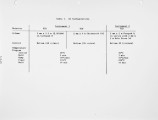| OCR Text |
Show INTRODUCTION Hazardous waste disposal techniques have been historically grouped into three distinct categories including: storage in "secure" land fills, injection into "stable" geological formations and incineration. Of these choices available to the plant operator, incineration represents the only method which actually detoxifies the hazardous material. In principle, such detoxification occurs via chemical conversion to more easily handled, less voluminous hazardous compounds. In fact, storage in land fills and/or injection into geological formations represent hazardous materials handling strategies, as opposed to disposal strategies. While perhaps the more expensive option, incineration has become the preferred alternative applicable to combustible organic hazardous wastes [1]. To regulate the disposal of all hazardous waste materials, the Congress of the United States enacted the Resource Conservation and Recovery Act (RCRA) [2] in 1976. As defined recently in the interim final RCRA regulations (published in the June 24, 1982 Federal Register [3]), the most difficult to destroy hazardous material entering an incinerator is specified to be the Principal Organic Hazardous Constituent (POHC). The RCRA regulations require that before a permit is issued by the United States Environmental Protection Agency (USEPA) to a potential incinerator operator, a destruction and removal efficiency (DRE) of 99.99% must be demonstrated on all designated POHCs the unit may encounter. Further limits on HC1 and particulate emissions have also been specified. The enactment of strict government regulations, the high cost associated with current incineration disposal options and the apparent 5.3.1 |





















